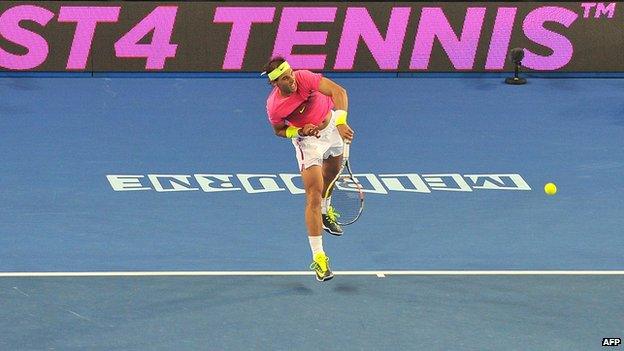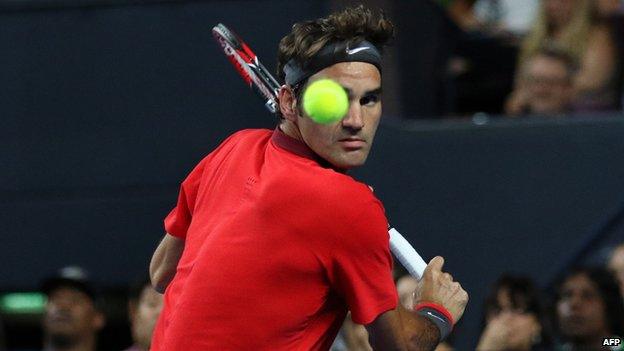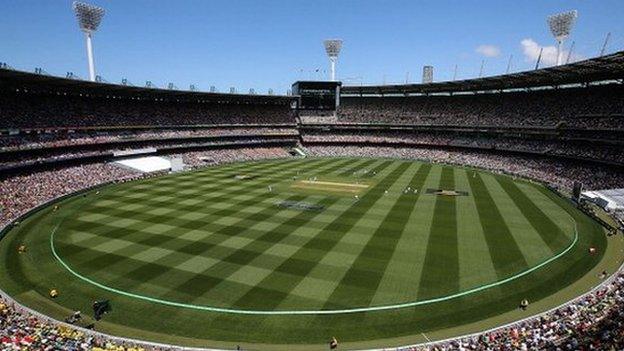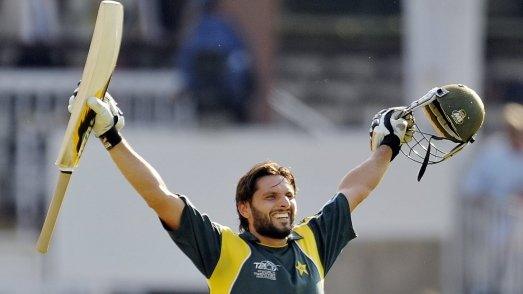Can Fast4 do for tennis what Twenty20 has done for cricket?
- Published

Rafael Nadal showed himself to be comfortable with the new format
Amid roaming spotlights, pumping music and a cloud of dry ice, Spanish tennis star Rafael Nadal emerged in hot pink to entertain a hyped audience in Melbourne.
Welcome to Fast4 Tennis, an Australian innovation that made its world debut in January in Sydney and Melbourne, ahead of the Australian Open tennis grand slam tournament.
Three years in the making, Fast4 is an abridged version of the game created by Tennis Australia - the governing body of tennis in Australia - to increase participation and interest.
Having watched enviously as the shortened Twenty20 game brought kids and the wow factor back to cricket, Tennis Australia has launched a faster, shorter format that can be played in one hour.
To make it easier for the crowd and TV audience to catch-on, the four new rules were plastered on billboards positioned around the newly renovated Margaret Court Arena at the Australian Open venue in Melbourne.
Nadal beat all Fast4 challengers at the arena, including Australian veteran Mark Philippoussis.
'Society wants this'
The new rules are: no lets, no advantage points, first to four games wins the set, and a tiebreaker at 3-3 - the first to five points. The rules were easily mastered by Nadal and also by Roger Federer and Lleyton Hewitt who played each other in the Fast4 world premiere in Sydney.

Roger Federer took on Australian star Lleyton Hewitt in an exhibition Fast4 match
Tennis Australia's Director of Participation, Craig Morris, says it was easy to convince the big name players to pioneer Fast4.
"The top players take their role as guardians of the sport very seriously," he says. "They want to play a role in the evolution of the game... The opportunity for Roger and Lleyton and Rafa was something they were really open to and embraced.
"They know we don't want to replace five-set tennis at grand slam level. They also know they have a role to play to foster the future development and growth and that society wants this."
'Tennis in one hour'
About three years ago, Tennis Australia began to consider a shortened version of the game in response to falling participation numbers.
The strategy was to create a format that could be played in an hour, so tennis could better compete with other sports such as football, soccer, basketball and netball that have defined start and finish times.
"Our participation numbers in traditional competition formats of 09:00-12:00 and 13:00-17:00 on weekends had fallen away because people don't want to give up so much of their weekend," Mr Morris explains.
"We needed a product to attract lapsed players and newcomers that fits today's lifestyle. We took the key rules that we thought would shorten the game and create more excitement and innovation."

Tennis styles have evolved over time - but the essence of the game has stayed the same
After deciding on the rules, selecting a name for the new format was easy. "The name had to say what it was - fast - get in and out in an hour," Mr Morris says. "Then there's four points to win a game, four games to win a set and four rule changes. So, Fast4.
"It's tennis in one hour. People book a court for an hour. It fits."
The professional players liked it too. Federer and Hewitt believe it will be good for kids because it is quick and intense, while Philippoussis lamented that it was over too quickly, losing his one set 4-1 to Nadal in 14 minutes.
When dates for the demonstration games were announced last year, Hewitt described Fast4 as a boon for the game.
"Playing Roger in this new format will be an exciting challenge for both of us and a lot of fun. It's a fantastic innovation for tennis, and one that I hope will take off," said Hewitt.
'Strategies and tweaks'
Tennis Australia expects Fast4 to be popular with kids as well as casual and mature players. But it also has plans beyond suburban tennis courts.
"I expect weekend competitions to start to use this format," Mr Morris says. "As it grows and prospers, we hope to see exhibitions in Australia to filter around the world and for semi-professionals and professionals to start to use this format too.

The creators of Fast4 hope it will appeal to a new generation of tennis players
"We have spoken to the other grand slams [Wimbledon and the French and US Opens] and they have a real interest. We are talking to them about the opportunity for Fast4 events in different countries this year."
Like the evolution of Twenty20 cricket, Tennis Australia expects some aspects of Fast4 to change as it is tested over time.
"The four rules will be the staple but I can see different strategies and tweaks coming in to create more innovation," Mr Morris predicts.
"What we wanted to do in this country was to put a stake in the ground. Tennis needed a shorter format. We decided 'let's do this'. We think long term this is important to the growth of tennis."
Nadal seems to agree. As the music boomed around the Margaret Court Arena during the 90-second break allowed at the end of each set, the grinning tennis star took out his mobile and took a selfie, giving Fast4 the thumbs up.
- Published7 December 2014

- Published18 September 2012
